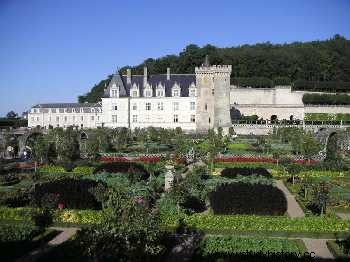Intro
The Loire Valley, known as "The Garden of France" was the favorite residence of the Kings of France during the Renaissance. These are buildings for the most part built or greatly altered during the French Renaissance, at a time when royal power was located on the banks of the river, its tributaries or near them (15th and 16th centuries). However, most of the castles have their origins in the Middle Ages from which they retain important architectural features. The concentration of remarkable monuments in this region has justified the classification of the Loire Valley as a World Heritage Site by UNESCO.
Château d'Amboise
Charles VIII died there in 1498 at the age of 28, after hitting a door lintel with his head. François I invited Leonardo da Vinci to stay in Amboise, the great painter died there in 1519. The castle was the scene of the conspiracy of Amboise in 1560, a prelude to the Wars of Religion.
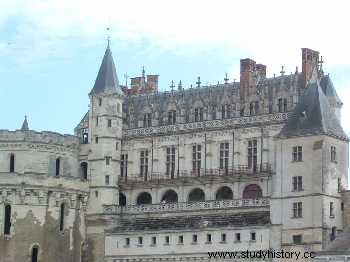
Castle of Azay-le-Rideau
It was built by the treasurer of the king François Ier. Described by Balzac as "a faceted diamond set by the Indre", Azay-le-Rideau is one of the most famous castles of the Loire.
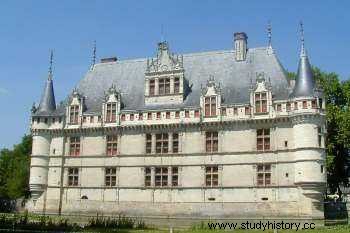
Royal Castle of Blois
The medieval castle of the Counts of Blois became the main residence of King Louis XII. When François I ascended the throne, his wife Claude de France refurnished the castle with the intention of leaving the castle of Amboise to set up the court in Blois. But after the death of his wife, in 1524, he abandoned the Château de Blois in favor of the Château de Fontainebleau. The castle of Blois remains the principal residence of his successors in particular with François II and Charles IX. It was in Blois that Henri III convened the Estates General in 1576 and 1588. Then the castle was occupied by Henri IV and on his death it became a place of exile for his widow Marie de Médicis. The Château de Blois, as it can be admired today, is mainly made up of three wings where gothic, renaissance and baroque styles mingle.
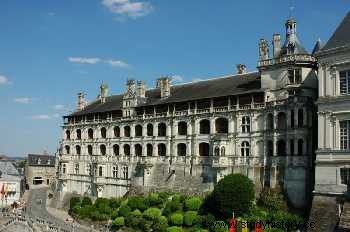
Château de Chambord
In 1519, the site of Chambord was chosen to open the site of a hunting lodge on the site of an old fortified castle. The kings of France abandoned the castle after the death of François I, and it gradually deteriorated. Louis XIV again undertook transformations in 1684. Molière gave his first representation of the Bourgeois Gentilhomme there in 1670. Napoleon Bonaparte gave the castle to Marshal Berthier. During the Franco-Prussian War of 1870 it served as a field hospital.
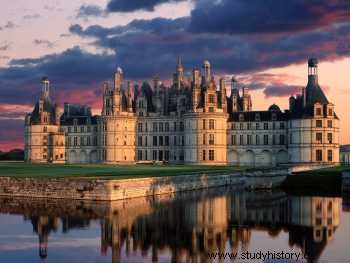
Castle of Châteaudun
Châteaudun Castle includes:
- a dungeon (31 meters high and 17 meters in diameter)
- a Sainte-Chapelle
- the Dunois wing
- the Longueville wing
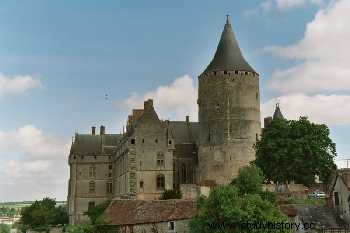
Château de Cheverny
The lands of the castle were bought by Henri Hurault, Military Treasurer of King Louis XI, whose current owner, the Marquis de Vibraye, is the descendant. After it had been recovered by the crown for fraud against the state, it was given by King Henry II to his mistress Diane de Poitiers. Nevertheless, she preferred the Château de Chenonceau and sold the property to the son of the first owner. Hergé, the author of Tintin, was inspired by the Château de Cheverny, which he truncated from its two external massifs, to create the Château de Moulinsart residence of Captain Haddock.
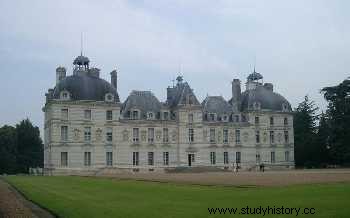
Castle of Chaumont-sur-Loire
In the 10th century, it was Eudes I, Count of Blois who had a fortress built to protect the town of Blois from the attacks of the Counts of Anjou. Louis XI had Chaumont burned and razed in 1455 to punish Pierre d'Amboise for to be revolted against the royal power during the "League of Public Good". The castle was rebuilt in a style already marked by the Renaissance while retaining the same fortified general appearance.
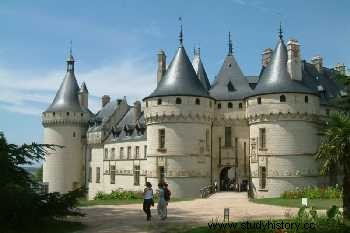
Castle of Chenonceau
The castle was built by the General Secretary of Finance of King François I. An audit of the finances revealed embezzlement, which enabled François I to impose a heavy fine on his descendants and to recover the estate and the castle (1535). It will be offered by Henri II to his famous favorite Diane de Poitiers, Duchess of Valentinois. Upon the disappearance of Henry II, mortally wounded during a tournament in 1559 by the captain of his Scottish guard Gabriel I de Montgomery, Catherine de Medici, who had become Regent, forced Diane de Poitiers, her rival in the king's heart, to restore Chenonceau at the Crown. The history of the castle is marked by the women who were its owners and builders. A room is dedicated to the daughters and daughters-in-law of Catherine de Medici, The bedroom of the five Queens (Marie Stuart, Marguerite of France, Louise of Lorraine, Elisabeth of Austria and Elisabeth of France). It served as a hospital during the First World War. During the Second World War, he found himself straddling the demarcation line with one side in the occupied zone and the other in the free zone.
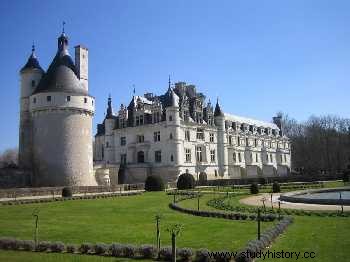
Castle of Chinon
The castle of Chinon is built on old Roman fortifications and consists of three parts built as and when historical necessities. He welcomed Henry II of England and his sons Jean Sans Terre and Richard Coeur de Lion. In 1429, Joan of Arc found the Dauphin Charles VII there.
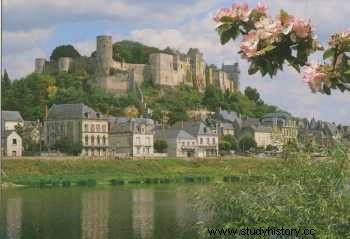
Château de Langeais
A medieval fortress built at the end of the 10th century, the castle was enlarged by Richard Coeur de Lion, under the domination of the English Plantagenêts dynasty. Philippe Auguste reconquered it in 1206, then it was destroyed by the English during the Hundred Years War. It is currently considered to be the oldest stone fortress built on French soil. In 1465, Louis XI ordered its reconstruction. The most significant event in the life of the château was the marriage of Charles VIII to Anne de Bretagne.
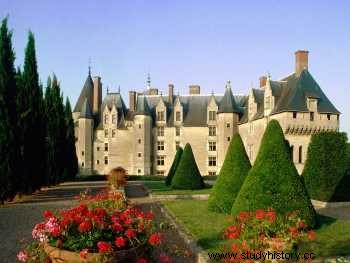
Château de Loches
The history of Loches seems to go back to antiquity where the place was called Castrum Locae (Camp of the marshes), which would explain the name of Loches. Today it is very popular among the British, many of whom settle in this corner of Touraine, thus reconnecting with their Plantagenêt ancestors.
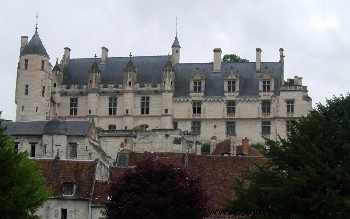
Castle of Montsoreau
The only Château de la Loire built in the bed of the river, the Château de Montsoreau was built in 1450 by Jean II de Chambes, close adviser to King Charles VII. Its history has been marked by many characters such as Marie Stuart, Anne de Brittany, Claude of France or François Ier. With its avant-garde architecture, it has always inspired artists from Rodin to Turner, Flaubert and Alexandre Dumas.
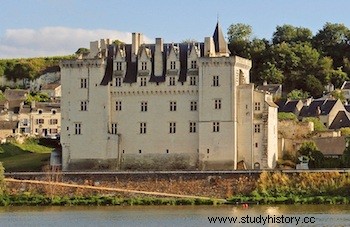
Castle of Saumur
The Château de Saumur passed into the hands of the Count of Anjou and his Plantagenêts heirs. Philippe Auguste, King of France and Capetian, annexed it to the crown. King René of Anjou, "good king René", writer, cultured man and fortress builder significantly improves the overall comfort. Less glorious, the castle became a prison under Louis XIV and Napoleon. The château was immortalized in the manuscript of the Très Riches Heures du Duc de Berry in the folio for the month of September which depicts the grape harvest at the foot of the château.
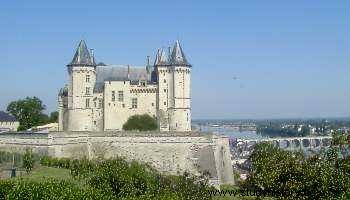
Castle of Valençay
The castle was bought in 1803 by Charles-Maurice de Talleyrand-Périgord at the request of Napoleon Bonaparte, in order to receive foreign dignitaries. The castle housed some of the works of the Louvre Museum, including ancient statuary (Venus de Milo and Victory of Samothrace in particular), the cabinet of drawings and the jewels of the Crown.
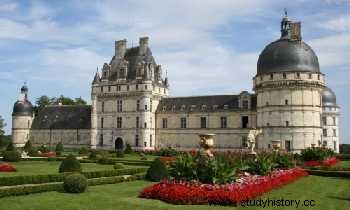
Château de Villandry
Last of the great castles that were built on the banks of the Loire during the Renaissance period. It is in this fortress that took place, on July 4, 1189, "the Peace of Colombiers" (name of Villandry in the Middle Ages), during which Henri II Plantagenet, king of England, came before Philippe Auguste, King of France, admit defeat.
